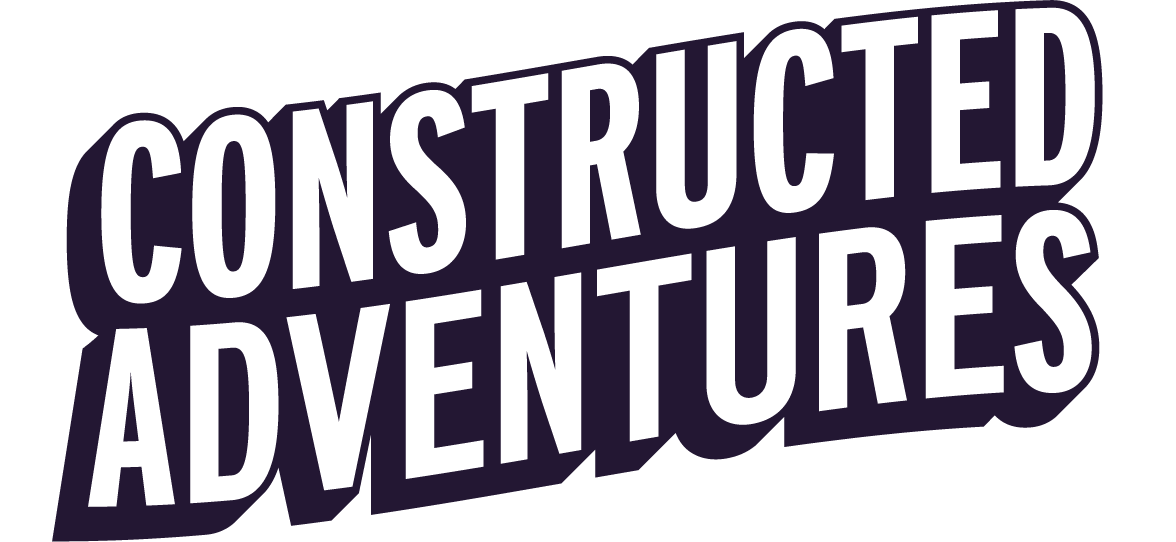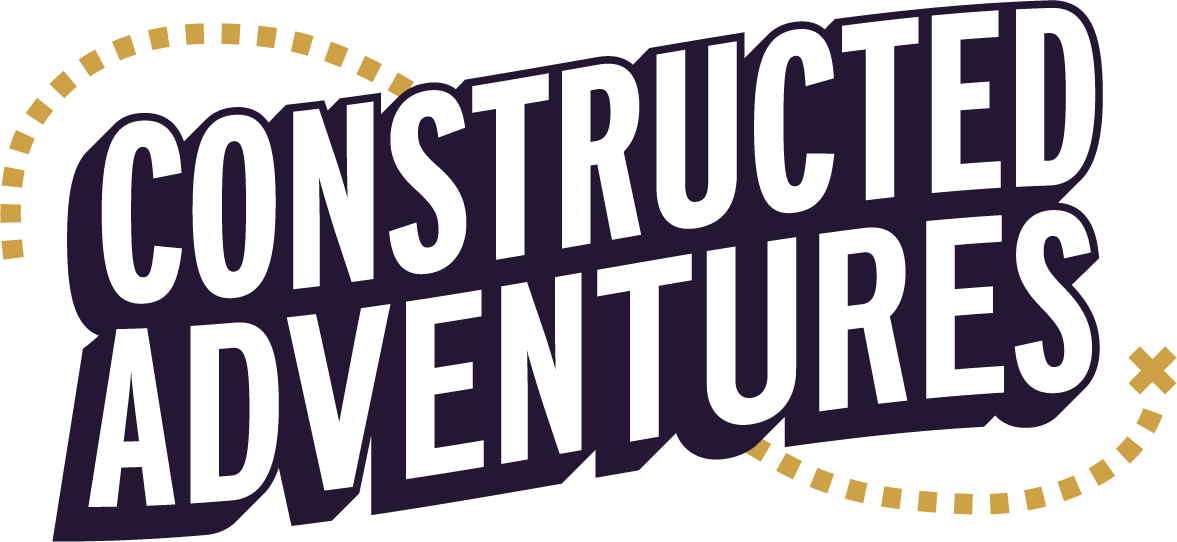Keys for Crafting Adventures for Kids!
Hi there! The Crafter is here again- this time to help you craft adventures for children! People of all ages can enjoy adventures, and one of the joys in my life is to make puzzle-y adventures for my own kids (I have elementary-aged twins). Let's get started!
When it comes to making puzzles for children, all you need to do is keep the child's capabilities in mind. For example, an elementary-aged child most likely would not be able to do a Caesar Cipher or a puzzle with a lot of text, because they are just learning how to read; but a high school student would be able to do those quite easily. In this blog post, I'll tell you the general guidelines for creating puzzles for each age group of kids. Keep in mind that these are just guidelines. You will most likely know the capabilities of the children you are making the adventure for, and you can adjust accordingly.
The general age to start making adventures for children is when they start exhibiting problem-solving independently, can understand language, and can communicate effectively. This is usually in the 4-8 year old age group. At this age, you can read the clues to the children (if they don't know how to read yet) so they can understand what they need to do. Also, puzzles should be simple, but rewarding and exciting.
Some examples of these kinds of puzzles would be:
Message on a jigsaw puzzle (or the back of a jigsaw puzzle)
Counting puzzles (I once used colored gems in a bag that matched the colors of the dials on a number lock. To get the combination, they needed to count the number of gems in each color.)
Simple symbol decodes
Hiding messages in balloons
Physical manipulation puzzles like a popsicle stick puzzle or lighting puzzle that shows them where to go next.
These challenges are good for this age group because the puzzles are single-step, and they can figure them out easily enough on their own. Keep in mind that if they are struggling, you can always help them. For one of the hunts I put on for my kids, I made two popsicle stick puzzles, one with a cat on it, and one with a tree on it to get my kids to go to the cat tree. (Quick tip! Be sure to have something on the puzzle to let them know where the top of the puzzle is. I didn't and it proved to be really difficult for them. Even just the word "top" at the top, really helps! It probably would also be best to make the sticks go horizontal instead of vertical like I did.)
Making puzzles for this age group is good for strengthening basic skills too! If your child is struggling in reading, math, or other subjects, it's a great idea to make a puzzle or two that helps them practice these skills. They will be having so much fun, they won't even realize they are learning!
This age is really fun to make puzzles for because you can blow their minds really easily! Use a black light with UV markers! Hide a key in the bottom of a bowl of slime! Give them a homemade scratch-off ticket! Make a red lens viewer and reveal a secret message to them, hide letters or numbers inside a lamp shade and have them turn on the light, etc… You can make whatever puzzles you want, but make sure they are simple to complete and are fun. The children will be amazed, and you will be amazed at what they can do!
The next age group is the 9-12 age. At this point, they should be able to read quite a bit, can do some math puzzles and can handle a 2-or-more step puzzle. You should still definitely add some "that's cool moments" like black light puzzles, red lens, hidden messages, etc… But their reading comprehension should allow them to read written clues, do a book cipher or overlay cipher, and even listening puzzles that include music (or even Morse code)! They should have better hand-eye coordination so you could do more advanced manipulation puzzles like a scytale cipher, spiral cipher, and some logic puzzles.
You can be a bit more creative with theming with this age group. They will love science, space, and mad scientist themes, or you could even bring them into their favorite fandom or videogame world! It’s really fun to use a popular theme like Harry Potter or Animal Crossing!
For a Harry Potter-themed adventure, you could have them "practice" potion making by having them find a bunch of ingredients (that taste good together) but are labeled things like "essence of frog wart" or "silver tail wing" scattered around the room. Once they gather all of the ingredients, they will find a spell book that is bookmarked to a certain page. On that page they find a spell with a list of symbols and one missing. The book tells them to gather the ingredients in the order of the symbols, to figure out what ingredient is missing. In the example, they are looking for a 5-letter word to open a word lock. The puzzle is that on each ingredient label there will be a symbol, and a single letter will be capitalized, spelling out a word; but the word is incomplete. They need to choose the last ingredient from a list of options to complete the potion, to get the letter they need to finish the word they are looking for. Have them assemble the ingredients into a potion to “gain strength” for their next challenge.
Example ingredients:
hair of Lion's mane
Essence of batwing
drop of inchworM
rOot of radish
And the choices are: feather of Quetzal, Fin of jawfish, or IguaNa saliva
A puzzle like this is perfect for the 9-12 year old because it requires multiple steps, makes them feel like a wizard/witch by assembling the ingredients, and has a fun element of “I actually have to drink this (yummy!) potion to help me in my next task!”
The final age group is 13-18 years old. These players can pretty much complete the same puzzles that adults can do, including multi-step puzzles. They can read and understand whole paragraphs of information, and can decipher encoded information. They will have great hand-eye coordination so you could make a knot un-tying puzzle or a "don't touch the wire" puzzle and even computer-based puzzles using binary or QR codes! If you are making a puzzle that requires the players to make a cocktail or drink (We once did an adventure where you had to bribe a bartender by making him a cocktail or I've seen one where you had to make and drink the "antidote" to a zombie virus!) you can always make it alcohol-free.
Teenagers are usually receptive to any theme, from being in the wild west, to pulling a bank heist, or escaping the past to get back to the future, and even horror themes! If you have more than one teenager playing, you may want to consider adding in enough puzzles to keep everyone busy, or break them up into teams and make the puzzles rely on teamwork! Always remember to keep their puzzling prowess in mind when designing these puzzles though. If this is the first time they are doing an adventure or escape room-type activity, you may want to keep the puzzles on the easy side. Puzzling is like a language. The more you do them, the more you understand and the better you are at solving them. But if they have been to escape rooms before, or love doing puzzles in general, then go wild!
One more thing: be sure to ALWAYS playtest your puzzles before you set your players on them! A puzzle may not be solvable because you may not have included important information! Or maybe there's something that you thought was obvious, but no one else can seem to figure it out. Always have someone else playtest your puzzles for you, and be sure that they can solve them without any hints!
Have you made any puzzles for children? How did it go? Did you learn anything that wasn't mentioned here? We'd love to hear all about your child-friendly adventures (or even the ones not so child-friendly!) on the Constructed Adventures Subreddit, or tag us on Instagram using the #ConstructedAdventures! If you want any help with your adventures, playtesting your puzzles, or just wanna chat, come join us on the Constructed Adventures Discord!
Until next time,
Happy Adventuring!






